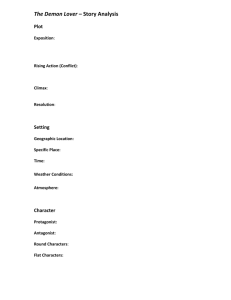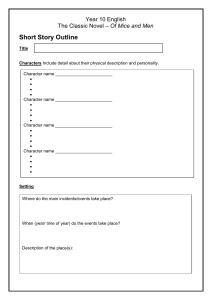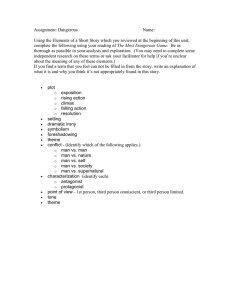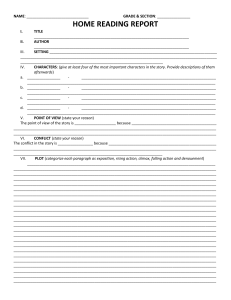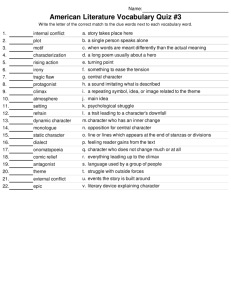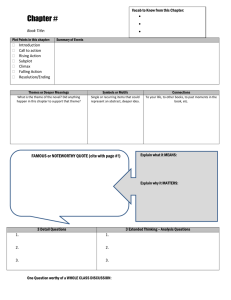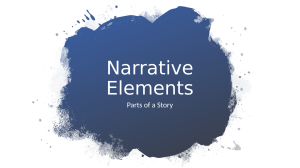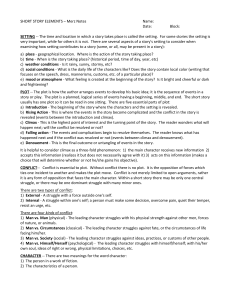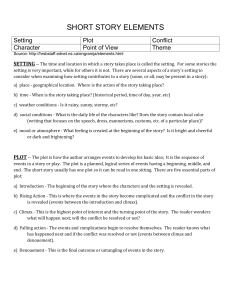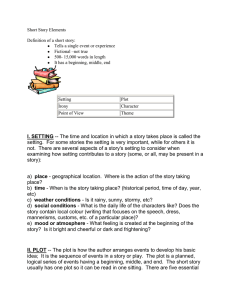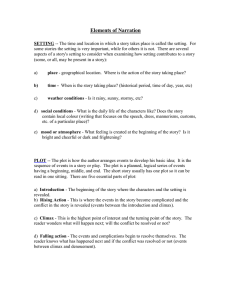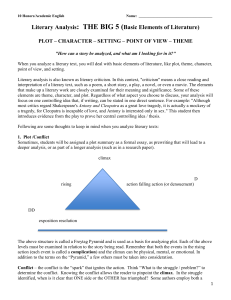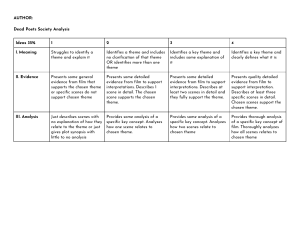ELEMENTS.OF.FICTION.and.Drama1.doc
advertisement
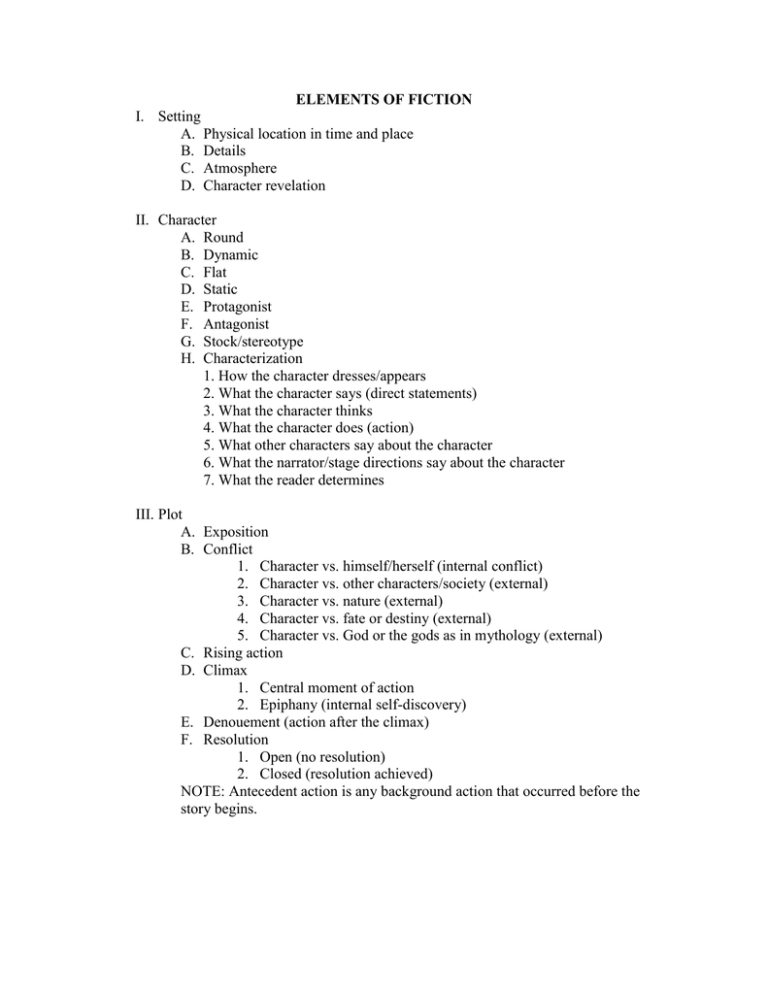
ELEMENTS OF FICTION I. Setting A. Physical location in time and place B. Details C. Atmosphere D. Character revelation II. Character A. Round B. Dynamic C. Flat D. Static E. Protagonist F. Antagonist G. Stock/stereotype H. Characterization 1. How the character dresses/appears 2. What the character says (direct statements) 3. What the character thinks 4. What the character does (action) 5. What other characters say about the character 6. What the narrator/stage directions say about the character 7. What the reader determines III. Plot A. Exposition B. Conflict 1. Character vs. himself/herself (internal conflict) 2. Character vs. other characters/society (external) 3. Character vs. nature (external) 4. Character vs. fate or destiny (external) 5. Character vs. God or the gods as in mythology (external) C. Rising action D. Climax 1. Central moment of action 2. Epiphany (internal self-discovery) E. Denouement (action after the climax) F. Resolution 1. Open (no resolution) 2. Closed (resolution achieved) NOTE: Antecedent action is any background action that occurred before the story begins. IV. Point of view A. Omniscient B. Limited omniscient C. First person (major or minor) V. Theme A. Theme subject B. Theme statement 1. Direct statement 2. Indirect (reader decides) VI. Symbol and archetype VII. Imagery (appeals to the five senses) VIII. Language A. The way characters speak B. Figurative language 1. Metaphor and simile 2. Personification 3. Hyperbole (exaggeration) 4. Understatement 5. Allusion IX. Irony X. Tone
